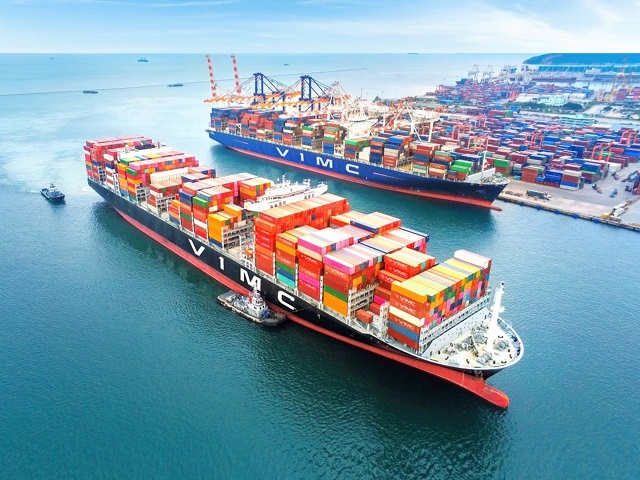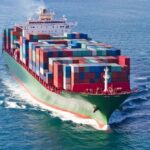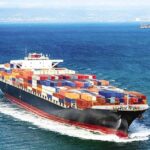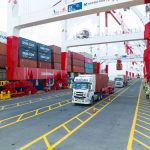
Soaring Ocean Freight Rates: Businesses Should Consider Alternative Transport Options – Illustrative Image
|
On June 19, at the Ministry of Industry and Trade’s regular press conference for the second quarter, Mr. Tran Thanh Hai, Deputy Director of the Import-Export Department, stated that the US announced on April 2 that it would impose countervailing duties on all countries, but on April 9, it decided to temporarily suspend the application for 90 days.
This decision allowed countries, including Vietnam, to continue their exports. The highest tariff rate proposed by the US for China was 145%. However, after the agreement on May 12, the rate was reduced to 30%. This created a “vortex” as Chinese businesses rushed to take advantage of this period to boost their exports to the US.
According to Mr. Hai, China’s increased exports led to a concentration of goods, ships, and containers in the region, resulting in a significant rise in ocean freight rates. A similar situation occurred during the COVID-19 pandemic.
In addition, there has been a localized shortage of containers, not only in China and Vietnam but also in other exporting countries such as Indonesia, Thailand, and Malaysia. However, according to the Ministry of Industry and Trade and the Vietnam Maritime Administration (under the Ministry of Construction), the container shortage in Vietnam is not yet widespread, and while there may be some difficulties, it is not as severe as during the COVID-19 pandemic.
Moreover, the Middle East conflict has impacted international transportation. If transport vessels need to avoid this area and detour around Africa, transportation costs will increase further, affecting export costs to Europe and the US East Coast.
Given this situation, Mr. Tran Thanh Hai recommended that businesses stay updated and coordinate closely with their import and export partners. Based on past experiences, it is crucial to be cautious when signing contracts related to transportation, logistics, and cargo handling to minimize risks, especially in the context of unexpected events such as delayed vessel arrivals or conflicts.
Businesses should also consider alternative transport options. In particular, the intermodal rail transport route to Europe remains operational and is a potential solution.
“The Ministry of Industry and Trade, together with the Ministry of Construction and the Ministry of Finance, is closely monitoring the logistics market developments to provide appropriate recommendations and support for businesses,” affirmed Mr. Tran Thanh Hai.
– 08:40 20/06/2025
The Soaring Cost of Ocean Freight: A Challenge for Businesses
The surge in ocean freight rates from Vietnam to Europe and the US has dealt a heavy blow to businesses, with many facing tens of thousands of dollars in additional costs when exporting goods. This sudden spike in transportation costs has inevitably taken a toll on profit margins, leaving companies scrambling for solutions.
Red Sea Tension: The Three Ministries Will Meet to Discuss Solutions for Business Obstacles
Expectedly, next week, three Ministries, including the Ministry of Industry and Trade, the Ministry of Transport, and the Ministry of Foreign Affairs, are scheduled to convene a meeting to discuss solutions to alleviate the difficulties faced by businesses amidst the escalating tension in the Red Sea.













































